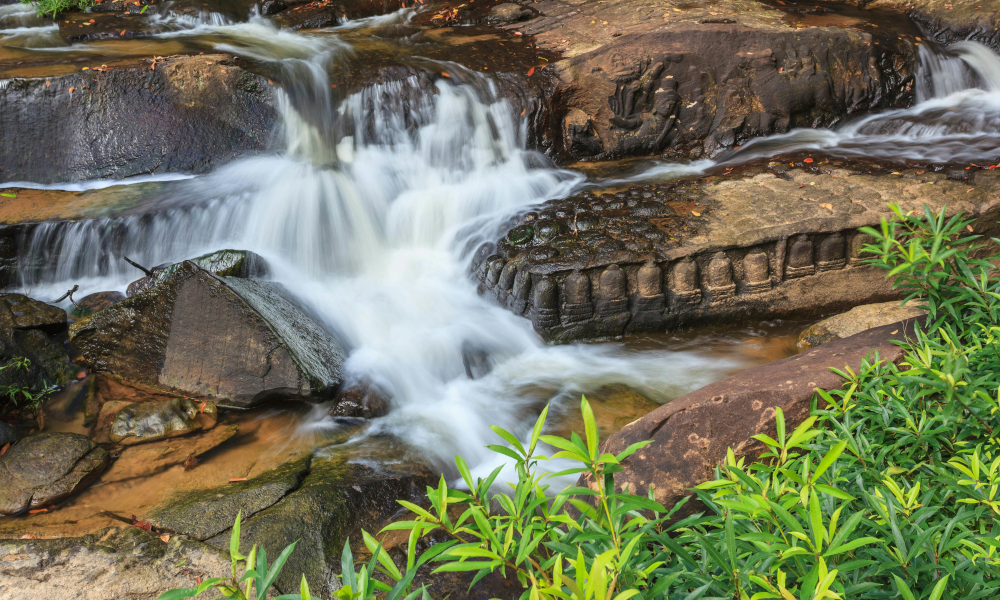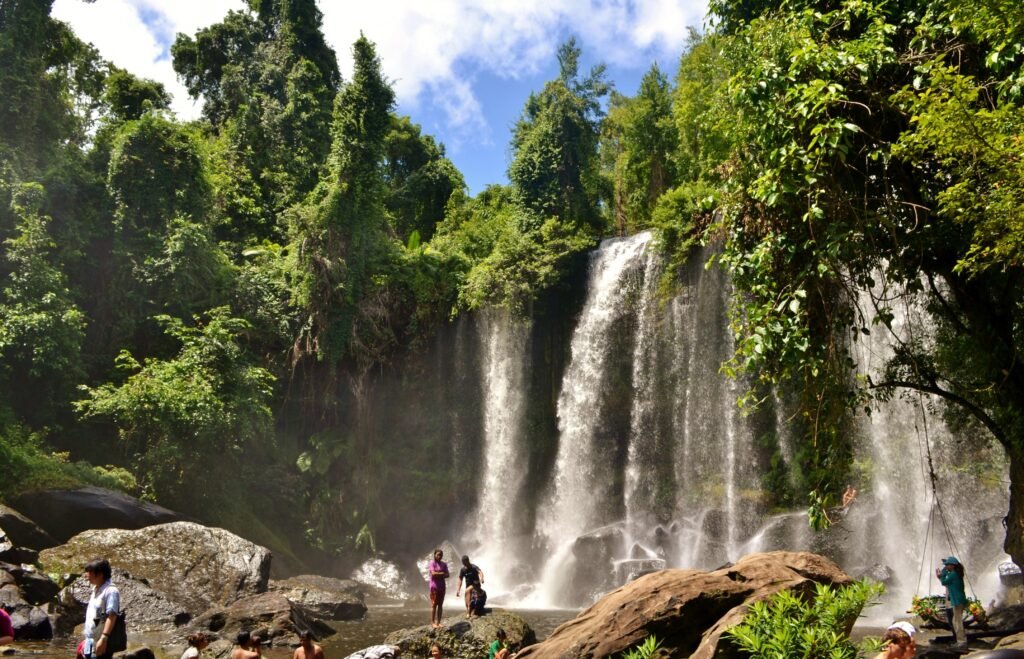Kbal Spean - Kulen National Park

Kbal Spean, which translates to “Bridge Head” in Khmer, is an ancient site from the Angkorian period, situated within Phnom Kulen National Park. It is found in the Banteay Srei district of Siem Reap Province. The name is derived from a natural sandstone rock formation that spans the Kbal Spean River.
This site is particularly notable for its array of stone carvings depicting yonis and lingas, which serve as offerings to the Hindu deity, Shiva. Consequently, Kbal Spean is often referred to as the Valley of a Thousand Lingas or the River of a Thousand Lingas. The carvings are most prominently visible after the rainy season when the river’s water level recedes.
Visiting Kbal Spean is typically combined with exploring other nearby attractions. The most proximate and popular site to visit alongside Kbal Spean is Phnom Kulen (Kulen Mountain), both of which are located within the confines of Phnom Kulen National Park.
In the vicinity of Banteay Srei, there are several noteworthy attractions, including the Banteay Srei Butterfly Centre, the Cambodia Landmine Museum, the Angkor Centre for Conservation of Biodiversity (ACCB), as well as the temples of Banteay Srei, Banteay Samre, and Beng Mealea.
Experience an exclusive tour of Kulen Mountain, Beng Mealea, and Tonle Sap Lake, including transportation from Siem Reap. Discover the Reclining Buddha and the 1000...
How To Get There
There are two primary routes to reach Kbal Spean:
- Through ACCB
Located 42 kilometers northeast of Siem Reap, the Angkor Centre for Conservation of Biodiversity (ACCB) is approximately an hour’s drive by tuk-tuk. This mode of transportation offers a delightful opportunity to observe the rural landscape, including villages and rice paddies.
To arrive at the archaeological site, visitors must undertake a 45-minute uphill trek that begins at ACCB. The journey follows a shaded jungle path, although some climbing is involved, so it is advisable to carry water for hydration. It is important to note that a valid Angkor Pass is required to access the trail leading to Kbal Spean.
- Via Phnom Kulen National Park
Alternatively, one can travel by car or van to Phnom Kulen National Park. An entry ticket is required, costing $20 at the entrance. For convenience, tickets can also be purchased online and delivered to your hotel the evening before your visit.
The journey by van will transport you directly into the park, lasting approximately 1.5 to 2 hours. It is advisable to request your driver to make a stop at Kbal Spean, where you can take some time to walk and explore the area before continuing to the Phnom Kulen waterfalls.
Access to this route is limited to vehicles such as cars, vans, or motorbikes; tuk-tuks are not permitted for this trip.
Best Time to Visit
Any season is nice to visit, there are a lot of trees and this makes the area around Kbal Spean cool. During the wet season, the jungle is lush and abundant, though the water will be running strongly and it may be hard to see the lingas. Just following the wet season is probably the best time, the water will have receded enough to get a clear look at the lingas and the jungle will still be lush and fresh from all of the rain.
You probably want to avoid going in the hot season, temperatures are scorching and it’s not best for bushwalking.
Visit in the morning to get the most out of your day (and avoid the heat), especially if you plan a visit to ACCB, the nearby wildlife sanctuary located on the same site as Kbal Spean. Guided tours at ACCB run from Monday to Saturday at 9 am and 1 pm sharp, a minimum donation of US$ 3 is requested.
History of Kbal Spean
The 1,000 lingas, are attributed to a minister of Suryavarman I during the 11th century (1006-1050), and these were carved by hermits who lived in the area. Inscriptions at the site testify to the fact that most of the sculpting was actually done during the reign of Udayadityavarman II (1050-1066). It is also mentioned that King Udayadityavarman II consecrated a golden linga here in 1059 AD. It is believed that the Siem Reap River flowing into Angkor is blessed by the sacred lingas over which the water flows.

